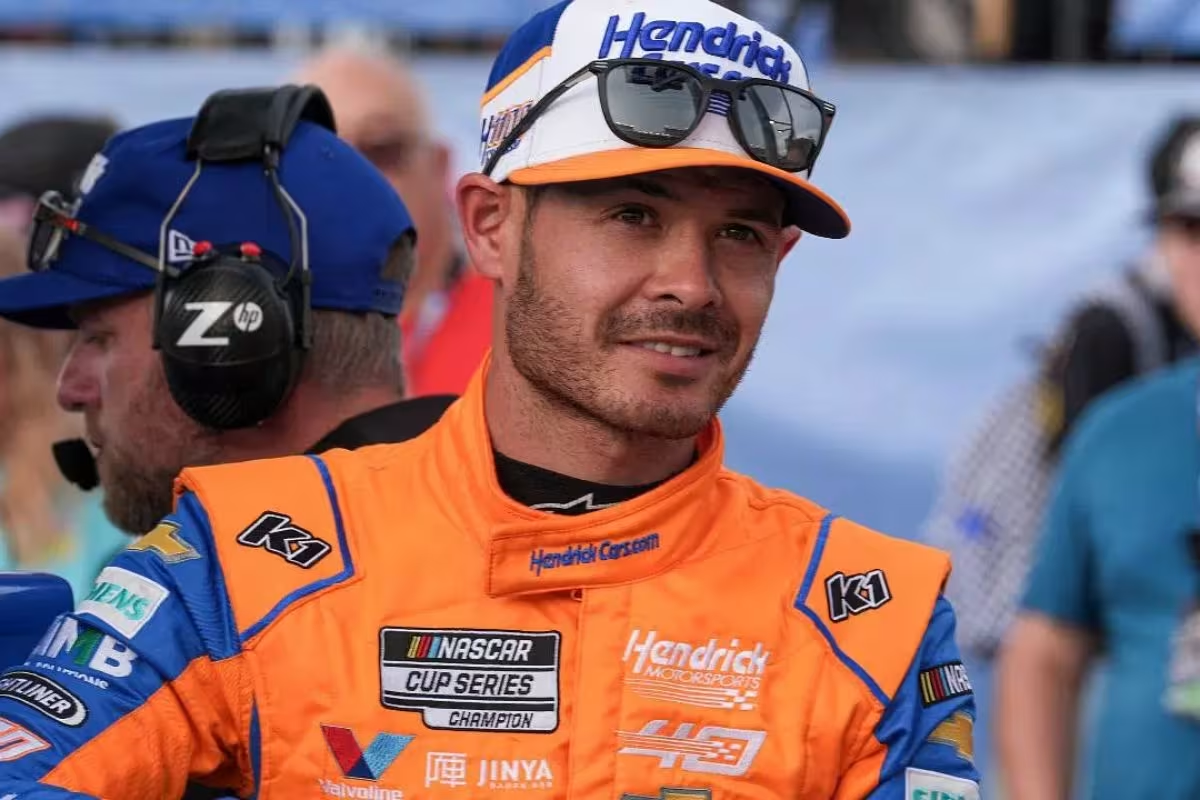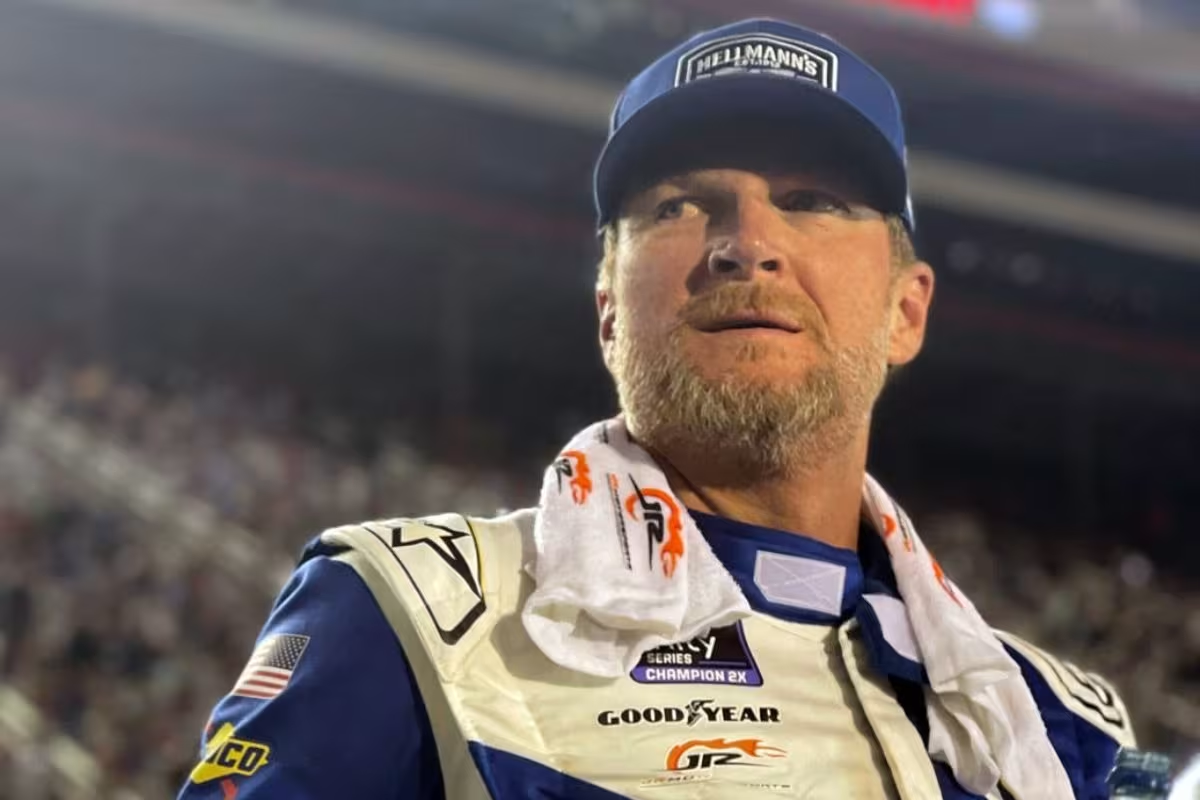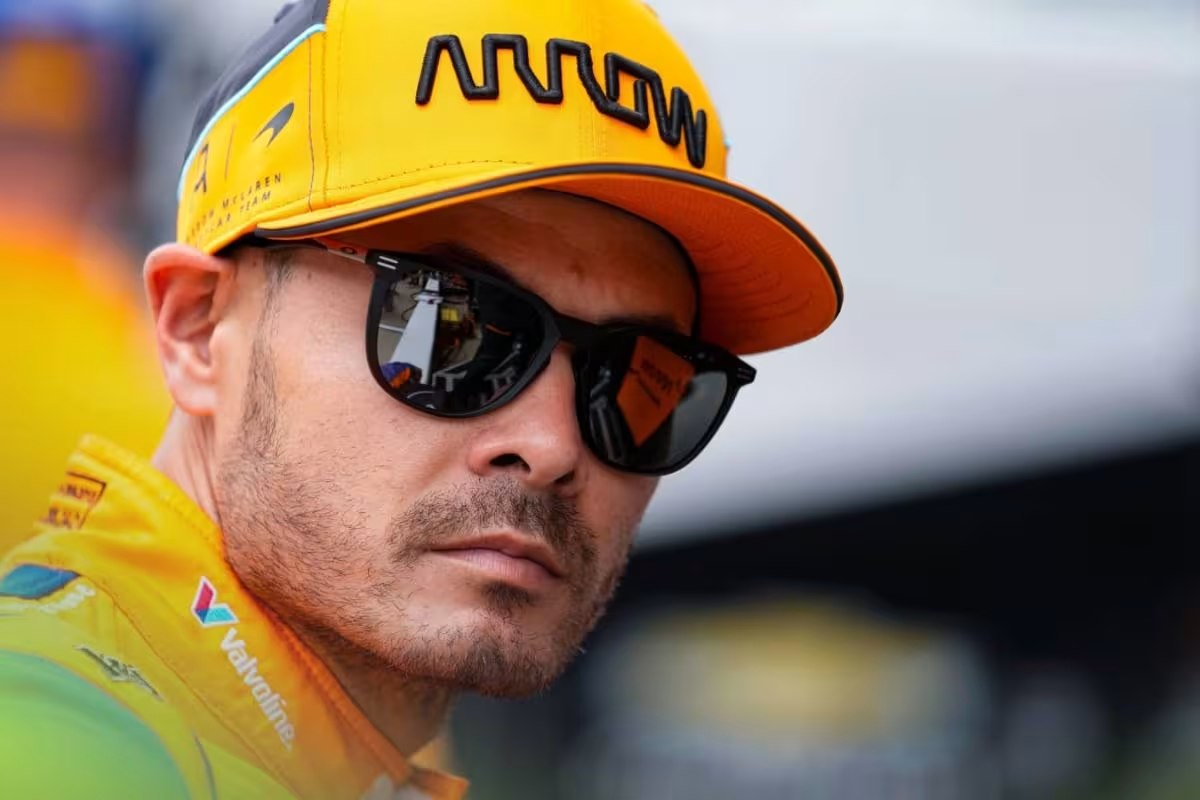Dale Jr. Disappointed by Kyle Larson: Kyle Larson‘s dominant performance at Bristol, where he led an impressive 462 laps, has raised considerable questions about the current state of NASCAR racing. Despite his triumph, fan engagement appears to be waning, with only 27.2% of participants in a Jeff Gluck poll expressing enjoyment of the event. Dale Earnhardt Jr.’s labeling of the race as a “snooze-fest” highlights a growing concern around the lack of competitive drama in recent races. This critique invites a closer examination of how race dynamics are evolving and what implications this has for the sport’s future. What changes might be necessary to reignite fan interest?
Key Highlights
- Kyle Larson led 462 of 500 laps at Bristol, securing his fifth victory of the season with a dominant performance in his #5 Chevrolet Camaro.
- Dale Earnhardt Jr. criticized the fall Bristol race for its predictability, calling it a “snooze-fest” due to the lack of tire wear and competition.
- Fan dissatisfaction was evident, with only 27.2% enjoying the race, reflecting concerns over the lack of excitement and competitive battles.
- The Next Gen car’s limitations at short tracks were highlighted, with issues in facilitating overtaking and minimal improvements from tire experiments.
- Proposed changes to the short-track package aim to enhance excitement and driver engagement, with Martinsville as a critical upcoming test for these adjustments.
Kyle Larson’s Dominant Victory at Bristol
Kyle Larson’s performance at the Bristol Motor Speedway was nothing short of exceptional, showcasing his skill and dominance in the NASCAR Cup Series. From the outset, Larson exhibited a commanding presence, starting on the front row and quickly establishing himself as the driver to beat. His #5 Chevrolet Camaro was tuned to perfection, allowing him to navigate the tight corners of Bristol with remarkable precision.
Leading an astonishing 462 of the 500 laps, Larson executed a strategy that was both aggressive and calculated. This level of control is a confirmation of his driving ability and the engineering excellence of Hendrick Motorsports. Significantly, Larson swept the stages, a feat that highlights his ability to perform consistently across all segments of the race. His victory marked his fifth win of the 2024 season, further solidifying his status as a top contender in the series.
However, the one-sided nature of the race sparked considerable debate among fans. Many anticipated a more competitive battle filled with tire falloff and typical Bristol chaos, yet Larson’s dominance rendered much of the expected excitement moot.
As competitors struggled to keep pace, the anticipated drama failed to materialize, leaving a segment of the fan base dissatisfied. This dichotomy in perception emphasizes the complexity of race dynamics; while Larson’s triumph is a remarkable individual achievement, it also raises questions about the entertainment value of such dominant displays in motorsport.
Dale Earnhardt Jr.’s Take on the Bristol Race
Offering insights from a seasoned perspective, Dale Earnhardt Jr. analyzed the contrasting dynamics of the Bristol race, highlighting the striking differences between the spring and fall events. While the spring race was characterized by excessive tire falloff and driver chaos, the fall race presented a markedly different scenario, leading Earnhardt Jr. to express his disappointment.
During the spring event, NASCAR’s intervention was necessary due to the extreme tire wear, which triggered blistering and necessitated the provision of an extra set of tires. This dynamic introduced an element of unpredictability that engaged fans and competitors alike. Earnhardt Jr. acknowledged that this chaotic environment heightened the stakes, creating a compelling narrative as teams navigated tire strategy amidst the tumult.
“If I’m watching a race, a good race to me is one where there’s real contact and drama. Somebody feels wrong; you know there’s a hero-villain kind of thing. Underdog all those things, any of that. But contact, beating and banging, I like that.” – jr
In sharp contrast, the fall race lacked the same intensity. With virtually no tire wear and a uniform approach to tire strategy, the action became predictable. Earnhardt Jr. noted that this absence of differentiation resulted in a race that fell flat for spectators seeking excitement and drama. His candid assessment framed the event as a “snooze-fest,” a term that resonated with fans who anticipated a more thrilling showdown.
Dale Jr.’s Definition of a Good Race
For Dale Earnhardt Jr., the core of a good race hinges on the presence of competition, drama, and the visceral excitement that comes from intense on-track battles. His perspective reveals that the thrill of racing is not merely about who crosses the finish line initially, but rather the conflicts and narratives that unfold during the event. As he articulated, a good race embodies elements such as contact, a hero-villain dynamic, and the underdog’s struggle.
“Oh, as a driver, I want to lap field. I want to like just pass everybody and dominate. I’m racing them while I go by, yeah, just crush them, everything.” – jr
In his analysis, Dale Jr. differentiates between his viewpoint as a fan and as a driver. While he acknowledges the allure of dominating a race, he underscores that as a spectator, the lack of engagement renders the experience dull. This dichotomy highlights the complexity of racing narratives, where the excitement stems from unpredictability and conflict.
Kyle Larson’s Reaction to Fan Criticism
Following the intense playoff race at Bristol, Kyle Larson faced considerable backlash from fans who criticized the event as subpar. Despite the widespread discontent, Larson stood firm in his assessment of the race, expressing a preference for the high-intensity competition he experienced over the more conservative approach of the earlier spring race.
In his post-race comments, he emphasized, “I would way rather run 100% all night long for 500 laps than run 50%. I don’t think that’s much of a race.” This perspective sharply contrasted with the fans’ overwhelmingly negative response, where only 27.2% deemed the race enjoyable in a poll conducted by Jeff Gluck.
“I was happy for sure because I know you guys probably think that the race in the spring was better, but as a driver, I would way rather run 100% all night long for 500 laps than run 50%. I don’t think that’s much of a race.” – larson
Larson’s reaction to the criticism highlights a critical divide between driver experience and fan expectations. While fans often seek thrilling entertainment characterized by overtaking and dramatic finishes, drivers like Larson prioritize the challenge and strategy involved in high-stakes racing.
Moreover, Larson highlighted underlying factors contributing to the race’s perceived lack of excitement, suggesting that external conditions—perhaps related to car performance or track characteristics—played a considerable role.
Kyle Larson’s Critique of the Next Gen Car and Tire Issues
A considerable concern among drivers, including Kyle Larson, has emerged regarding the performance limitations of the Next Gen car, particularly at short tracks like Bristol. Since its introduction, the Next Gen car has faced criticism for its inability to facilitate overtaking, a notable drawback that was glaringly evident during the recent race. Efforts by NASCAR to address this issue through tire experiments have yielded minimal improvements, leaving the short-track package under examination.
Larson addressed the narrative blaming Goodyear for the lack of passing, emphasizing that Bristol has historically been a challenging track for overtaking, regardless of tire modifications. “Bristol’s ALWAYS been tough to pass,” he stated on his X account, acknowledging the inherent difficulties drivers face. He warned fans against oversimplifying the issue, asserting that the challenges extend beyond tire performance and are rooted in the fundamental design of the spec race cars.
“Bristol’s ALWAYS been tough to pass. Speed on pit road, and most likely there’s a good chance you’re going a lap down on the next run. That’s the way it is and has been for a very long time.” – Larson
Moreover, Larson cast doubt on the effectiveness of track treatments such as PJ1 or resin, suggesting that they did not notably impact the race outcome. His remarks underscore a broader sentiment within the driver community: the need for a thorough reevaluation of the Next Gen car’s capabilities, particularly in short-track scenarios.
“I don’t have the answer to fix what we currently have and neither do you but please stop blaming Goodyear. It’s not a tire problem. And also, have any of you ran around Bristol with or without PJ1? Or resin for that matter. Yeah that’s right… so 🤐 Temper your expectations. We’re driving spec race cars.” – Larson

News in Brief: Dale Jr. Disappointed by Kyle Larson
The contrasting opinions surrounding Kyle Larson’s victory at Bristol highlight the ongoing challenges within NASCAR regarding race dynamics and fan engagement. While Larson’s dominant performance showcased his skill, the resultant lack of competitive tension led to considerable dissatisfaction among viewers, as articulated by Dale Earnhardt Jr. This situation necessitates a critical examination of the Next Gen car and tire strategies to foster more unpredictable and thrilling racing experiences that resonate with fans and drivers alike.
ALSO READ: Kyle Larson’s Milestone Night at Bristol: A Closer Look at His Historic Win


